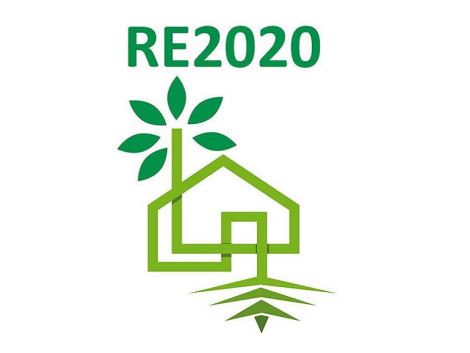

News | 27.11.2020
On 24 November 2020, the French Ministry of Ecological Transition announced the new orientations of the French Environmental Regulation RE2020 which will follow the Thermal Regulation (RT 2012) and will come into force in the summer of 2021. While the new guidelines emphasize the use of wood materials in construction, we call for vigilance on the progressive nature of the requirements for reducing carbon emissions.

On 24 November 2020, the French Ministry of Ecological Transition announced the new orientations of the French Environmental Regulation RE2020 which will follow the Thermal Regulation (RT 2012) and will come into force in the summer of 2021. While the new guidelines emphasize the use of wood materials in construction, we call for vigilance on the progressive nature of the requirements for reducing carbon emissions.
As a reminder, the construction sector accounts for 40% of the energy consumed in Europe. In terms of thermal regulations, France is a pioneer. The ATIBT's DRYADES project, based on life cycle analysis (LCA) of pre-products and construction products made of tropical wood, is helping to prepare for this. In order to have a European vision, we will also identify the regulations of the Member States relating to the carbon impact of buildings in construction.
A major change: dynamic life cycle assessment
Environmental Regulation 2020 brings a major change in the calculation of Life Cycle Assessment (LCA). It is now referred to a dynamic life cycle assessment. The carbon impact will be calculated across all materials and equipment used in a building, from the construction and demolition phases, giving a higher weight to the carbon that is emitted today than the carbon that will be emitted later.
With the 2012 thermal regulations, 60 to 90% of the building's carbon footprint, calculated over a 50-year period, will come from the construction phase of materials and equipment. From now on, the regulations will be favourable to the use of wood, since the thresholds set will make it possible to maintain a logic of results, leaving builders to choose the materials and techniques they wish to implement optimally.
Wood and bio-sourced materials as a solution
While timber frame houses represent less than 10 % of the new detached house market in France and the proportion of use of the timber structure is even lower in collective housing, these decisions should make the use of wood and biosourced materials almost systematic, including structure (shell) in detached houses and small collective housing by 2030.
A gradual transition
A gradual transition is expected, with a decrease of at least 30% in GHG emissions from construction by 2030 compared to 2013. The environmental requirements will increase in stages compared to the current situation ( -15% carbon equivalent content, expressed in kgCO2eq/m², in 2024, -25% in 2027 and -30 to -40% in 2030). This will increase the use of materials with a low carbon footprint, particularly wood and biosources. The essential challenge for the first phase 2021-2024 will be the appropriation of the life cycle assessment method by the entire sector. A rapid evolution is expected for individual houses, where timber frame construction is quite common and competitive. For collective housing, biosource materials are likely to be used systematically as finishing touches and are very common in the structural work, where more traditional techniques are used.
The ATIBT's DRYADES project in response to the RE 2020 regulation
In order to be as well-prepared as possible for the life cycle analysis method, ATIBT has initiated the "DRYADES" project which aims to create FDES (environmental and health declaration sheets) for tropical wood construction products. The FDES data will be used to calculate the environmental impact of new buildings throughout their life cycle.
Indeed, ATIBT and its partners (LCB, Centrum Hout and potentially other beneficiary federations of the project) wish to implement the "Dryades" project. The latter aims to promote tropical wood products in the construction sector by providing pre-products, Environmental Product Declarations (EPDs) and Environmental Product Declaration Sheets (EPDS) for a range of certified products in the Congo Basin, Life Cycle Analyses (LCAs).
tag(s) :